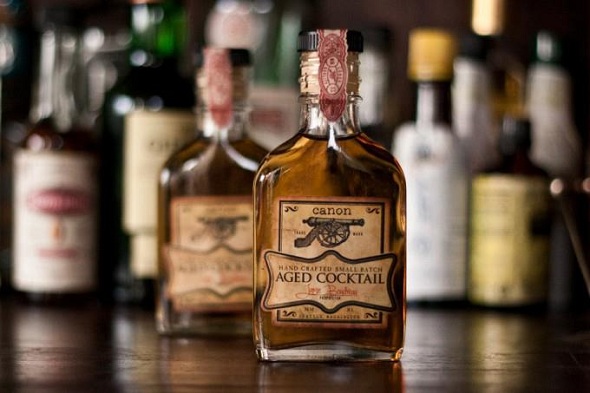Tales of the Cocktail just wrapped up, and we’re still recuperating from the haze of parties, seminars, tasting rooms and New Orleans in general. While nights consisted of events and some rather bacchanalian revelry, during the day we attended as many seminars as we could handle. These ranged from the cocktails of the Lost Generation to lectures on ice and a seminar on bottling carbonated cocktails. The latter was a particularly popular topic, and the room was packed with inquisitive bartenders, all eager to learn more about this trend that’s really taken hold over the last couple of years. Because while bottling cocktails is fairly easy, carbonating them in bulk is another story.
The bottled cocktail panel included Evan Wallace (Founder of Perlage Systems and maker of the Perlini carbonated cocktail system), Kyle Ford (Cointreau Mixologist) and Solomon Siegel (Victoria-based bartender and bottled cocktail aficionado.)
Evan Wallace led things off with a physics lesson. One that was surprisingly interesting, easy to follow and included some helpful diagrams. He noted that when carbonating a drink, it’s important to get the pressure just right. Too few bubbles will leave the drink tasting flat. And too many bubbles will cause CO2 to escape, resulting in a loss of pressure.
Solomon Siegel chimed in with an important note: drinks topped with soda always force a trade off. Do you want your drink to be fully carbonated or fully flavored? Because you can’t have both. That’s where systems like Perlini’s come in, as they carbonate the entire cocktail, leaving you with a fully flavored beverage that’s effervescent from your first sip to your last.
During the discussion, Kyle Ford and a team of drinks-makers ensured we never went thirsty, serving a Cointreau Rickey and a Corpse Reviver #2. The first iteration of each was served traditionally, while the second example was carbonated using the Perlini system. In each case, the fully-carbonated cocktail was substantially more bubbly.
If you’re interested in bottling carbonated cocktails yourself, here are a few key takeaways from the seminar —
1. The introduction of CO2 to your cocktail creates carbonic acid, which can cause drinks to be more tart. To combat this, you may want to decrease your allotment of citrus.
2. Speaking of citrus, always fine-strain your juices. Pulp will cause drinks to expire more quickly.
3. Attempt to bottle your cocktail at the lowest possible temperature.
4. Keep the bottle steady. Once you’ve bottled your carbonated cocktail, try to keep movement at a minimum. Agitation will just cause loss of carbonation.
The session ended with Evan Wallace unveiling Perlini’s new system that’s geared toward bars. The sleek-looking machine is full of bells and whistles that makes batch carbonation and bottling an easier task. Wallace noted that for this seminar, they averaged 35 seconds per bottle. That’s nothing compared to a bottling plant, but it’s pretty solid for a bar trying to crank out a batch of drinks. Plus, with a shelf life exceeding two months, you can make them in bulk.
The bar system will cost upwards of $2,000, but if you’d like to bottle carbonated cocktails at home (or bottle in lower volume for your bar), Perlini’s personal system is a more affordable option, costing closer to $200.
Photo: David Cole



